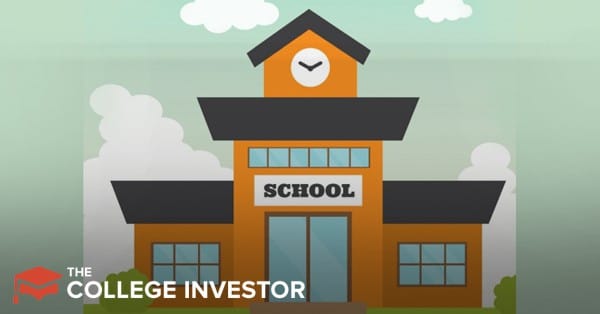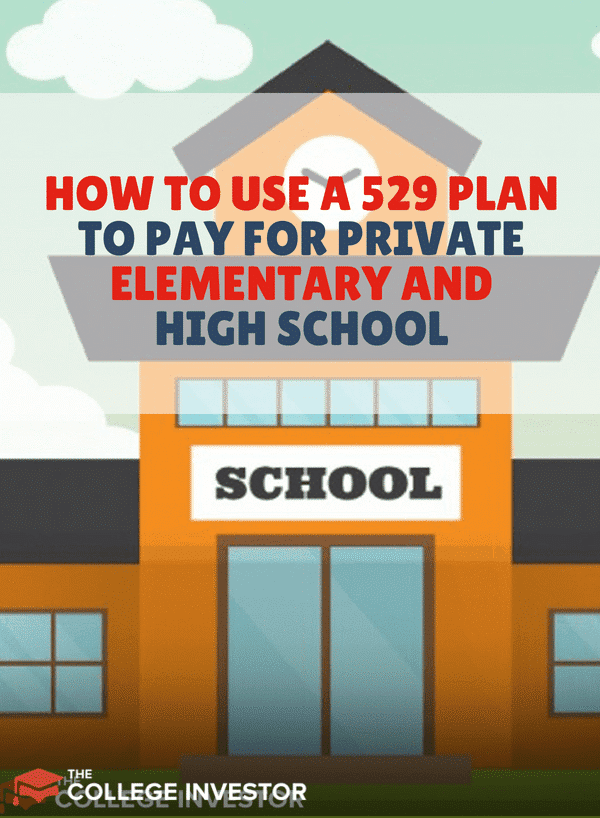
You can now use a 529 plan for K-12 private school tuition.
The late 2017 tax overhaul didn’t just affect Federal income tax brackets. Since the SECURE Act was passed, 529 plans have changed. Now parents can withdraw up to $10,000 per year to pay for private primary and secondary education tuition (if your state allows it).
This is a big change to 529 plans and changes a lot about what counts as a qualified 529 plan expense.
Should you take advantage of this new tax provision? We’ll explain how it works, and when you might want to take advantage.
How Can I Use the 529 Plan for Private and Elementary Education?
When you use the 529 plan for post-secondary or higher education expenses, the use of the funds are relatively broad (see the definition of qualified higher education expenses). However, parents need to be careful when using the 529 for elementary or secondary education. Parents may only use the money in these accounts to pay for private school tuition. Yes, just tuition.
Expenses such as computers, field trips, summer camps, etc., are not covered by this provision. Additionally, the law only covers distributions of up to $10,000 per year (for elementary and secondary education).
By contrast, the Coverdell Education Savings Account allows parents to spend money on all qualified education expenses (such as computers, etc.) but does have stringent contribution limits.
To take advantage of this new rule, you’ll simply cash out investments, transfer the funds to your checking account, and use the funds to pay for primary or secondary school tuition. Be sure to keep track of how you use the distributions for tax purposes (in case you get audited).
Rules Surrounding 529 Plans
529 plans are educational “IRAs” that are administered at the state level. 529 plans are considered tax-advantaged accounts. Savers can invest in the 529 plan, and the gains from the investments are free of capital gains, so long as the funds are used to pay for qualified expenses (which now include up to $10,000 of private elementary and secondary school tuition).
Many states offer tax deductions or credits when parents or grandparents fund 529 accounts. You can see a full list of the 529 plan deductions by state here. It’s important to note that you won’t get a Federal deduction or credit for funding a 529 plan.
It’s also important to note that your eligibility for a deduction may be contingent on choosing the 529 plan administered by the state where you live. If your state doesn’t offer a deduction or credit, I recommend check out our list of the best places to open a 529 plan.
529 plans don’t have firm limits on funding, but the gift tax limit in 2024 is $18,000. That means that you and a spouse could each contribute $18,000 to a 529 plan (for each child) without triggering any extra taxes. You can also “superfund” a 529 plan by contributing up to five years of gifts at once.
See the 529 plan contribution limits here.
Where To Open A 529 Plan
Where you open a 529 plan makes a difference. Each state has their own program, and while some states let you use any 529 plan and claim the tax deductions, others require you to use their state's plan.
Check out this map below and find your state's 529 plan:
When it Makes Sense to Use the 529 for Primary or Secondary Expenses
The big advantages of 529 plans are the tax deductions offered at the state level, and the ability to withdraw money without paying tax on the growth.
However, to get the most value from a 529 plan, it takes time. Trying to use 529 plan money early in a child's life could limit the benefits of tax free growth (it's hard to get a lot of compound interest in just a few years). Especially if you start drawing out a large amount of money early on.
So should you ever use the 529 for primary or secondary expenses? Here are three times when it starts to make sense.
1. Overfunded for Higher Education
Funding a 529 plan is a bit of a risk. You’ll never be 100% sure that your child will actually use the funds for college. They may not be cut out for college, you may raise a star athlete who gets scholarship offers, or they may opt for an inexpensive college choice.
If your child reaches high school, and doesn’t look like they’ll need every dollar in your 529 plan, it would make sense to use the funds for a private secondary education (if you’re already incurring the expense). Just remember, you can also transfer funds to another 529 beneficiary (such as a sibling) without incurring any penalties.
2. Capture Tax Credits or Deductions
Parents who already plan to pay for private school should consider contributing to the 529 plan just to capture the benefits. If your child’s private school costs $6,000 per year, run the money through the 529 plan before you pay tuition. That way you’ll capture a deduction (or even a credit) based on your contributions (for an expense you were paying anyhow).
This only works if you're located in a state that offers a tax deduction for 529 plan contributions.
3. Take Gains Off the Table
The last reason to consider using a 529 plan to pay for primary or secondary tuition is to take gains off the table. If your 529 account has experienced some nice gains, you might want to use those gains earlier rather than later (and save any remaining funds in cash).
Distributions from the 529 plan are tax-free when used for qualified expenses, so if you’re incurring private schooling expenses, you may as well use the funds from the 529 account if you’ve seen nice gains.
Don't Attend Private School Just to Use the 529
I love to take advantage of the tax code, but your life should dictate how you use the tax code, not the other way around. If private primary and secondary education isn’t part of your overall financial and family plan, then don’t worry about using the proceeds early. It is just fine to use the 529 as a college savings plan.
Can I Use the Proceeds of a 529 Plan for Homeschooling?
Late in 2017, it looked like the right to use 529 proceeds for private elementary and secondary education would be extended universally to homeschool families. However, that portion of the law was overturned, so homeschoolers cannot universally use the 529 for homeschool expenses. The law so narrowly applies to primary and secondary tuition expenses, it is difficult to see how homeschool families may practically be able to use the funds.
That said, a few states universally consider homeschoolers a form of private schooling. Alaska, California, Illinois, Indiana, Kansas, Kentucky, Nebraska, and Texas are states where homeschools are universally considered private schools. That means parents in those states can likely use 529 plans for select elementary or secondary school expenses that meet the “tuition” criteria. By contrast, parents in those states can easily use the Coverdell Education Savings Account for qualified education expenses which include things like curriculum, textbooks, supplies, and computers.
If you are a homeschool parent in any state (including the states listed), I recommend contacting a lawyer (or the Home School Legal Defense Association) before using any distributions from a qualified education savings account.
Important Tax Note
This law is still very new, and it's a big change. As a result, many states have yet to change their own tax laws to match the Federal law. What that means today is that using 529 plan money for private school tuition may be a tax free event at the Federal level, but it could be a taxable event in your state until the state law is changed.
Be very cautious before making any significant changes or plans around this new law until you understand all the implications.
As of 2024, the following states DON'T follow Federal tax law in regard to 529 plan usage for elementary education:
That means if you live in one of the states above, you may owe taxes in your state if you take money out of your 529 plan.

Robert Farrington is America’s Millennial Money Expert® and America’s Student Loan Debt Expert™, and the founder of The College Investor, a personal finance site dedicated to helping millennials escape student loan debt to start investing and building wealth for the future. You can learn more about him on the About Page or on his personal site RobertFarrington.com.
He regularly writes about investing, student loan debt, and general personal finance topics geared toward anyone wanting to earn more, get out of debt, and start building wealth for the future.
He has been quoted in major publications, including the New York Times, Wall Street Journal, Washington Post, ABC, NBC, Today, and more. He is also a regular contributor to Forbes.
Editor: Clint Proctor Reviewed by: Ashley Barnett
